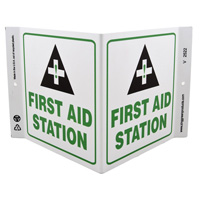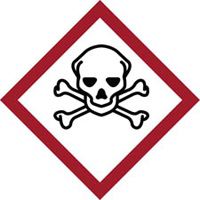| The Home page of ILPI's Safety Data Sheet (SDS) Resource, the leader in SDS information since 1995! | |
| The history and philosophy behind this resource. | |
| A curated collection of books and reference materials concerning Safety Data Sheets and closely related topics. | |
| Paste your plain text SDS into the SDS-Demystifier, and it will be converted into a hypertext-enriched document with links to detailed explanations of each key term. | |
| An extensive list of frequently asked questions about Safety Data Sheets including regulations, content, compliance, and more. | |
| A humorous take on Safety Data Sheet jargon. Fill in the blanks on our entry form to generate a personalized Unsafety Data Sheet to share with your coworkers. | |
| Since 1995, we've maintained this massive curated list of the best places to find Safety Data Sheets on the Internet. | |
| You are here! Way more than a glossary, this hypertext-enhanced resource covers hundreds of SDS-related terms and expert knowledge. Each entry includes both the SDS relevance and links to additional authoritative resources. | |
| Archived results of Safety Data Sheet related polls taken by some of our millions of site visitors | |
| The OSHA regulations behind SDS regulations, including the inspection guidelines and over 400 official interpretations letters under the Hazard Communication Standard | |
| Commercial suppliers of SDS authoring and management software as well as cloud compliance services. | |
| Commercial companies that will create SDS's for your specific needs as well as SDS translation companies. |

Safety signs, banners, and scoreboards? Get yours at Safety Emporium!
Definition
A vesicant is a drug or other agent that produces blisters. Vesicants are highly active corrosive materials even at extremely low concentration.
Additional Info
One of the most familiar examples of a vesicant is called mustard gas, which was used as a chemical warfare agent in World War I and the Iran-Iraq war. Mustard gas is a trivial name for 1,1'-thiobis(2-chloroethane), also known as bis(2-chloroethyl)sulfide or HD.


We have all kinds of safety wall signs at Safety Emporium.
Certain chemically related species are collectively referred to as mustards. These agents can be quite deadly as they have a high solubility in lipids (fatty tissues). Symptoms of exposure to mustard gas include conjunctivitis, blindness, cough, edema of the eyelids, and erythema or necrosis of the skin. When inhaled, this can severely and irreparably damage the respiratory tract. And to add extra insult to injury, mustard gas is also a carcinogen.
Vesicants have other uses besides chemical warfare; in these cases the vesicating properties are an undesirable/unwanted side effect or symptom. For example, some chemotherapy drugs are mild vesicants as are a variety of industrial useful chemical intermediates.
SDS Relevance
The Safety Data Sheet (SDS) should warn in Section 11 (toxicological information) if the material is a vesicant. Avoid the use of vesicants if at all possible. If a vesicant must be used, utilize the controls suggested in Section 8 (exposure controls/personal protection) of the SDS. Appropriate controls such as a fume hood can minimize exposure as can personal protective equipment (PPE) such as goggles, face masks, respirators, aprons, gloves etc. Do not rely on odor to warn you of possible exposure, vesicants can produce harmful effects at concentrations below the odor threshold.
Further Reading

Get your GHS-compliant labels and signs from Safety Emporium.
- Vesicant/Blister Agent Poisoning at the US Centers for Disease Control and Prevention.
- ILPI's page on Chemical Preparedness and Response.
- Vesicant Chemical-Warfare Agents at the Merck Manual Professional Edition.
- Vesicant & irritant chemotherapy at HemOnc.org includes an deailed list of these agents.
- Injection Site Reactions from vesicants and irritants at Chemocare.com
See also: lachrymator, poison, toxic.